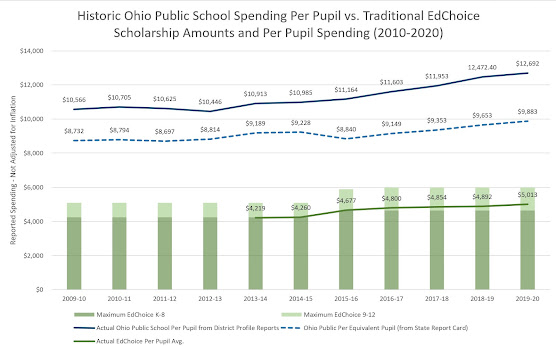What is Fair Funding for Parental Choice in Ohio?
Recently, Governor DeWine’s administration has unveiled the executive budget, which is the starting point for the process that will result in Ohio’s next operating budget. It includes a 3.2% increase in education funding for district and charter public schools, including student wellness and success funds. However, it was otherwise quiet on school funding, leaving the current formula “frozen” as it has been the last two years. In his comments, Governor DeWine deferred to the legislature’s ongoing activity on school funding, including the “Fair School Funding Plan,” developed since 2019 by the new Speaker of the House Bob Cupp (R - Lima) and former representative John Patterson (D - Jefferson). This is where Catholic schools will call upon your voices to be heard!
The plan bills itself as “a comprehensive & transparent school funding plan for Ohio developed collaboratively by educators and leaders from every corner of the state,” And it is, for public schools. However none of these corners included nonpublic school leaders or even public charter school leaders for that matter, and the version that passed the House in December said precious little about state scholarships except that vouchers would no longer be transferred directly from state payments to districts, a move that we in Catholic schools do not oppose, in theory.
Given the Governor’s deference to the legislature, who are elected by our votes and represent our interests, it seems like an appropriate time to ask the question: what is a “fair” amount for a scholarship to support a student’s education in a nonpublic school?
Ohio’s first voucher program, which was affirmed by the U.S. Supreme Court in Zelman v. Simmons-Harris (2002) was the Cleveland Scholarship, and in 1997 the vouchers provided scholarships of $2,250 per student at a time when the state reported per-pupil spending of $5,045 per pupil. Today, the state spends $12,692 per pupil and offers the Cleveland Scholarship as well as the EdChoice and EdChoice Expansion scholarships, all of which provide a maximum of $4,650 for students in grades K-8 and $6,000 in 9-12.
Clearly the value has shrunk considerably in real dollars for elementary grades, from 44.6% of what the state spent per pupil then to just 36.6% today. And the pressure on Catholc schools has only increased, especially in high school where the average cost to educate is higher. (Frustratingly, Ohio does not report statewide spending separately for K-8 and 9-12.)
When these scholarship amounts do not increase despite inflation, as is the case for 5 years now, it has an unintended effect of making it more difficult for nonpublic schools to serve as scholarship providers. Consider that every Cleveland scholarship student in K-8 as well as all who qualify as low income for EdChoice are prevented in law from paying any further tuition. Preventing burden on low-income families is reasonable policy, but the growing funding gap further obligates each Catholic school to fundraise anywhere from half to two-thirds of what is required to educate on a per-pupil basis.
(Note that the modest increases in actual scholarship spending per pupil on these charts simply represent more students each year matriculating in grades 9-12 and therefore receiving the higher amounts.)
The original scholarships of the 1990s were enough (or at least close) to cover the schools’ elementary tuition rates -- what parents were expected to pay to attend. High school, however, has never been close, a problem that has limited participation for decades. And tuition is only part of the story in that no student’s tuition covers the full cost to educate in Catholic K-12; parishes, religious orders, endowments, and/or non-profit foundations subsidize the operation of every Catholic school.
Consider greater Cleveland, where in 2019 the average cost to educate for the 12 Catholic high school providers for the Cleveland Scholarship Program averaged $15,537 per pupil, though their tuitions averaged $12,826 and varied greatly from a low of $8,700 to a high of $16,600. Any scale beyond a handful of students filling empty seats requires meaningful resources, placing tremendous pressure on the schools to fill gaps of about $10,000 per pupil on average, or make cuts that sacrifice quality from schools that are already highly efficient. There must be a better way to provide resources to educate scholarship students while still saving the state considerable taxpayer money in education.
Catholic schools are committed to providing education and formation. They are a ministry of the Church, which invests significantly in them. But it begs the question whether a state scholarship policy that provides parental choice, but offers only a fraction of the resources required for a quality education is, in fact, “fair” to taxpayers. It will be up to us to ensure that the legislature keeps an eye on this question as “fair funding” has an opportunity to be heard this spring. I hope you will be willing to join us in advocating for Catholic schools when the time comes.
P.S. Curious about the "Per Equivalent Pupil" reported by the state of Ohio? See this article from the Thomas B. Fordham Institute for an explanation.



